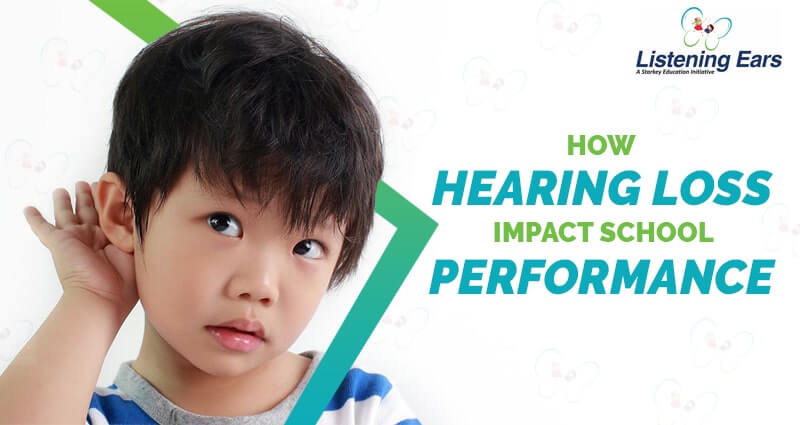Genetics of Auditory Disorders
Tips For Hearing Impaired
February 7, 2017Visual Alerts
February 9, 2017Of every 1,000 babies born in the United States, an estimated 3 to 4 will have permanent congenital hearing loss (National Center for Hearing Assessment and Management, 2010). Genetic causes are implicated in roughly half of these cases, with the other half being attributable to environmental causes (Rehm, 2005; Smith, Bale, & White, 2005). Genetic forms of hearing loss can be syndromic, indicating other physical features are seen alongside the hearing loss, or nonsyndromic, meaning hearing loss is the only finding. Among genetic forms of hearing loss, approximately 30% of cases are syndromic and 70% are nonsyndromic (Keats, 2002; Smith et al., 2005). More than 400 genes responsible for hearing loss have been identified (Toriello, Reardon, & Gorlin, 2004); most are part of a syndrome. Genes are located on the DNA of individuals. Genes are carried on chromosomes, which are passed down from parent to child. With few exceptions, each cell in the human body contains 46 chromosomes. Egg and sperm cells contain half, or 23 chromosomes, restoring the chromosomal number to 46 in the newly formed zygote. This arrangement specifies an individual will have two copies of every gene: one from each parent. One pair of chromosomes—designated sex chromosomes—confers gender. The remaining 22 pairs, referred to as autosomes, are numbered from 1 to 22, in descending order roughly according to size.
Patterns of Inheritance
Genetic disorders can be inherited in different ways: autosomal dominant, autosomal recessive, X-linked, and mitochondrial patterns of inheritance. In an autosomal dominant pattern of inheritance, a child inherits a normal copy of a gene from one parent and an abnormal gene from the other parent. The abnormal gene dominates the normal gene, so one copy of an abnormal gene is enough to cause an autosomal dominant disorder (Figure 1). Waardenburg syndrome is the most common cause of autosomal dominant syndromic hearing loss, affecting 1 in 42,000 people (Read & Newton, 1997). When a parent has Waardenburg syndrome, each child of that parent has a 50% chance of being affected by Waardenburg syndrome, assuming the other parent does not have the syndrome. The other 50% of offspring in this mating will be unaffected. Typical features of Waardenburg syndrome include sensorineural hearing loss, a white forelock, pale blue or differently colored eyes, and widely spaced eyes. A great deal of variable expressivity exists in Waardenburg syndrome, such that patients may have any combination of features, including normal hearing (de Sousa Andrade et al., 2012). Waardenburg syndrome accounts for approximately 2% of cases of profound congenital hearing loss (de Sousa Andrade et al., 2012). It should be noted that, in rare cases, some autosomal dominant disorders occur due to a new mutation in the child and neither parent has the disorder.
When a disorder is passed on in an autosomal recessive fashion, two copies of the abnormal gene are required to cause the disorder. Individuals who inherit only one abnormal gene and one normal gene are referred to as carriersand are notaffected by the disorder. Carriers frequently are unaware of their carrier status until they have an affected child. Individuals affected by an autosomal recessive disorder usually are the result of matings between two carriers. Figure 2 demonstrates potential outcomes of such a mating, whereby 25% of offspring are affected by the disorder in question, 50% are unaffected carriers, and 25% are free of the disorder and the abnormal gene. Consanguinity, or the presence of a common ancestor between mates, increases the risk of an autosomal recessive disorder. Usher syndrome demonstrates an autosomal recessive pattern of inheritance. The prevalence of Usher syndrome is 3 to 4 per 100,000 (Ahmed, Riazuddin, Riazuddin, & Wilcox, 2003), with higher prevalence rates in certain populations, including the Acadian population in Louisiana (Ouyang et al., 2003) and the Ashkenazi Jewish population (Guha et al., 2012). The most severe type of Usher syndrome is characterized by congenital profound sensorineural hearing loss and progressive vision loss (Liu et al., 2013). Securing an early diagnosis of Usher syndrome can help patients prepare for their futures. Usher syndrome may account for half of all cases of concurrent deafness/blindness (Yan & Liu, 2010).
X-linked, or sex-linked, disorders are inherited through genes on the X chromosome. Males only carry one X chromosome. Therefore, males are usually more susceptible to the clinical symptoms of an X-linked disorder. Although females carry two copies of the X chromosome and single mutation carriers are often unaffected by the disorder, others may show a wide range of clinical symptoms. Figure 3 shows an example in which the mother is an unaffected carrier and the father has a normal copy of the gene. The affected son inherited the abnormal X chromosome from the mother. In X-linked disorders, affected fathers usually pass on the abnormal gene to their daughters, but not to their sons. More than 80% of Alport syndrome patients have an X-linked disorder associated with sensorineural hearing loss, kidney disease, and ocular abnormalities (Kruegel, Rubel, & Gross, 2013; Rheault, 2012).
Though mutations in mitochondrial genes account for a small percentage of non-syndromic hearing loss cases, they are important to note for their mode of inheritance and their association with an unusually high susceptibility to aminoglycoside ototoxicity (Chen, He, Fu, & Dong, 2011). Mitochondria are cell organelles responsible for energy production. They are located outside the nucleus and have their own DNA and genes, separate from the nuclear genes. Mitochondria are found in egg cells, but not in sperm cells, so they are inherited exclusively through the maternal line. A woman with a mitochondrial mutation will pass the mutation to ALL of her children, while a man with a mitochondrial mutation will not pass it on to any of his children. Mitochondrial inheritance is demonstrated in Figure 4. Mutations in the mitochondrial MT-RNR1gene cause an increased susceptibility to aminoglycoside-induced ototoxicity, sometimes causing profound hearing loss after just one dose of aminoglycoside antibiotics (Van Camp & Smith, 2000). New-born screening for mitochondrial mutations leading to aminoglycoside-induced ototoxicity is not yet available. Genetic testing should be requested, if a maternal inheritance pattern is observed (Figure 4) and the child is affected following administration of aminoglycoside antibiotics. Genetic testing of a mitochondrial mutation can identify other family members or future pregnancies at risk of early-onset substantial hearing loss, thereby allow for preventive measures to be taken. In these cases, parents are advised to avoid the administration of aminoglycoside antibiotics and seek alternative antibiotic treatments.
More than 60 genes implicated in non-syndromic hearing loss have been identified (Van Camp & Smith, 2013). Approximately 80% of genetic nonsyndromic hearing loss cases are inherited in an autosomal recessive fashion, while nearly 20% demonstrate an autosomal dominant mode of inheritance (Hilgert, Smith, & Van Camp, 2009). X-linked and mitochondrial genes account for a small percentage of cases (Hilgert et al., 2009). The most common gene causing nonsyndromic hearing loss is the GJB2gene, also known as Connexin 26or DFNB1 (Angeli, Lin, & Liu, 2012). The Connexin 26 gene accounts for about half of all autosomal recessive causes of nonsyndromic hearing loss (Kenneson, Van Naarden Braun, & Boyle, 2002). Most of these patients are born to normal-hearing parents who are both carriers of mutations in the same gene (Angeli et al., 2012).
References: Online
https://en.wikipedia.org/wiki/Genetics
http://www.asha.org/Articles/Genetics-of-Auditory-Disorders/







